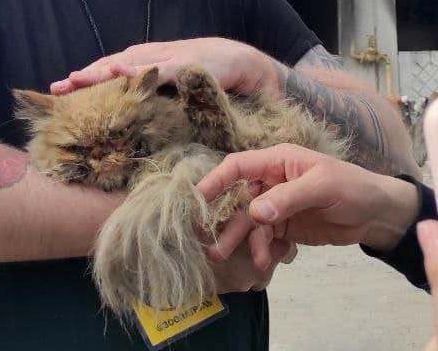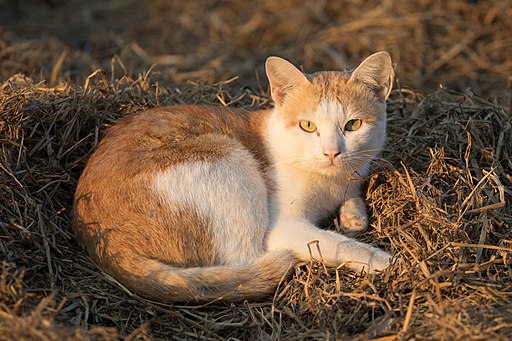Cats are beloved companions for many, but when they wander into gardens, they can become unwelcome visitors. They may dig into flowerbeds, use garden patches as litter boxes, or disturb the local wildlife. While it might be tempting to address this issue with harsh deterrents, humane methods are not only kinder but often more effective in the long run. It’s crucial to balance the protection of your garden with respect for the well-being of these curious creatures.
Natural Barriers: A First Line of Defense

Natural barriers are one of the simplest and most humane ways to keep cats out of your garden. Consider planting thick shrubs or using thorny plants like rose bushes to create a natural fence. Cats are less likely to venture into areas where their movement is restricted, and these plants can add beauty to your garden while serving a practical purpose.
Another effective method involves using mulch materials that cats dislike walking on. Rough pine cones, stone mulch, or holly cuttings can be laid around your plants to deter cats without causing them harm.
Repellents: Aroma-Based Solutions

Cats have a highly developed sense of smell, and you can use this to your advantage. Certain scents are known to repel cats; citrus is a prime example. Strategically placing orange, lemon, or lime peels around your garden can discourage them from entering. Furthermore, planting herbs such as lavender, rue, or rosemary not only helps deter cats but also offers delightful scents and uses around the home.
There are also commercial cat repellents available that are designed to keep cats away without harming them. These products usually come in the form of sprays or granules and use ingredients like peppermint or citronella oils to create an unpleasant olfactory experience for cats.
Innovative Gadgets: Safe and Gentle Deterrence

The technological age offers innovative solutions for keeping cats out of gardens. Motion-activated sprinklers provide a gentle deterrent; when a cat enters the designated area, a quick burst of water is released, startling but not harming the animal. Since most cats dislike water, this can be an effective way to encourage them to find a different playground.
Ultrasonic devices represent another high-tech option. These gadgets emit a sound that is unpleasant to cats but inaudible to humans, prompting cats to steer clear of the protected area.
Environmental Enrichment: Addressing Underlying Causes

Oftentimes, a cat may frequent your garden due to a lack of enrichment in its own environment. By assessing the areas that attract these furry visitors, such as bird feeders or fish ponds, you can determine if changes are needed. Reducing a cat’s curiosity with your garden can involve making its home environment more engaging. This could mean speaking to the cat’s owner, if known, to suggest they provide toys, climbing posts, or comfy outdoor shelters.
Moreover, ensure your garden isn’t inadvertently providing for a cat’s basic needs. Secure trash bins and avoid leaving pet food outside, as this may entice neighborhood cats to return frequently.
Community Solutions: Cooperative Approaches

Addressing community and feral cats can benefit from collective efforts. Engaging with local animal welfare organizations can lead to broader solutions such as Trap-Neuter-Return (TNR) programs, which help manage feral cat populations humanely. These initiatives involve humanely trapping, neutering, and returning cats to their original location, stabilizing and gradually reducing the population over time.
Working together with your neighbors to implement consistent and humane deterrent methods can also prevent cats from simply moving from one property to another, creating a safer and more enjoyable environment for everyone.
Conclusion: Compassionate Coexistence

While dealing with cats in your garden can be a challenge, adopting humane deterrent methods can lead to a harmonious balance between human spaces and wildlife habitats. Implementing thoughtful and respectful strategies will not only protect your garden but also uphold the well-being of the animal community. By understanding and adjusting our interactions with nature, we can create cooperative environments where both humans and animals thrive.
- 15 Tips for Managing Spider Infestations During Storm Season - August 8, 2025
- How Superstorms Have Reshaped Coastlines Over Time - August 8, 2025
- The Biggest Moose Ever Recorded in the US - August 8, 2025

